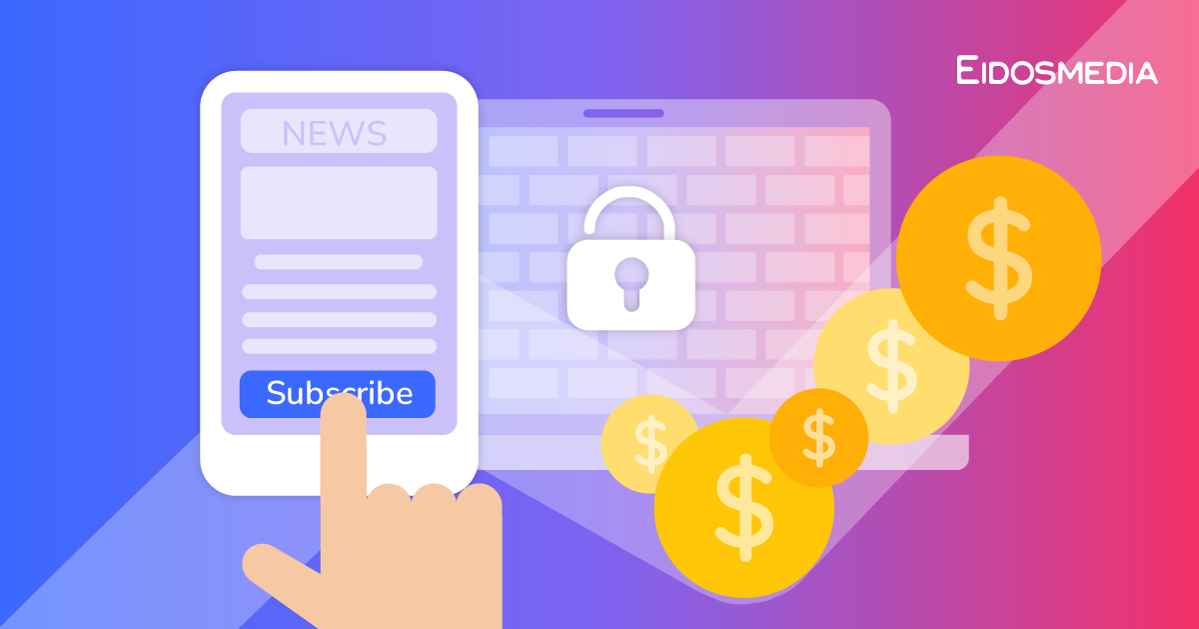What makes readers click "subscribe"?
As subscriptions play a growing role in the sustainability of news operations, new research is revealing the factors driving the all-important 'conversion' of readers into subscribers.
In the face of declining ad revenue, paid subscriptions are a key business goal for news publishers. Recent research from the Local Media Association (LMA) shows that publishers now prioritize digital subscription and membership (80%) over display advertising (72%). However, following strong growth during the pandemic, subscription revenue is increasingly unstable, making the systematic conversion of readers into subscribers more important than ever.
In our earlier post, The Science of Subscriptions, we looked at the way intelligent management of paywalls can help publishers to maximize the revenue yield of a given content base. But revenue building also depends on understanding the factors which lie behind a casual reader's decision to become a subscriber and what leads subscribers to abandon their subscription and become part of the 'churn'.
New data and research are throwing light on the mechanisms behind this process.
Who is most likely to click subscribe?
The first question publishers must ask themselves is, “Which readers are most likely to subscribe?” A key predictor in determining who will pay for news, and who is likely to churn is reader regularity.
“Regularity, meaning the number of days a month in which a subscriber visits, is considered by Northwestern University’s Medill Spiegel Research Center to be the most significant metric to predict churn,” reports the LMA. It’s clear that building reader loyalty is integral to driving subscription revenue.
Building reader regularity
Readers' regular engagement with news sources is increasingly being eroded by phenomena like news avoidance and news fatigue, meaning that publishers need to be creative with new ways to maintain reader interest. That could mean adding products, like games or recipes, to include in enticing bundles or rethinking how you cover tough topics that might lead to news fatigue.
LMA found that, “When asked how they plan to combat [news fatigue], [publishers] said they planned to: find better ways of explaining complex issues (67%), deliver news that doesn’t just point out problems but offers potential solutions (44%), and produce more inspiring human stories (43%), according to the report.”
But recent research suggests that some surprisingly simple factors are also in play.
Teasing techniques are critical
Studies are beginning to reveal that the way paywalled articles are offered to unsubscribed readers is critical to the decision to subscribe. In fact, including a 'standfirst' or summary below the headline, drastically reduces the conversion rate, according to a study reported in the Press Gazette. The study is significant as it measures correlation with readers' actual subscription behavior, rather than their self-reported 'willingness to subscribe'.
Specifically, the study from the Department of Media and Communication at LMU Munich showed that including the summary — which often gives away the most salient points of an article — before the paywall “decreased the odds of visitors clicking the “subscribe now” button, by 86.3%.”
Including an introduction also adversely impacted the likelihood of a subscription (-72.2%), significantly less than the stand-first. Meanwhile, “showing an image decreases the odds by 34.7%, while showing a blurred preview of the full length of the article decreases the odds by 26.3%,” (though the study questions the statistical validity of these last two findings).
Clearly, there are important lessons here for presenting paywalled material: in a time of rapid consumption with diminishing attention spans, a summary or intro may be all a reader feels they need to have 'consumed' the article.
Discounts are always welcome
Another finding is that readers are more responsive to discounts than to free gifts or other benefits, suggesting that resources are better spent reducing prices for new subscribers: "...offering a direct discount may provide visitors with the feeling that they are receiving a tangible benefit and encourage them to subscribe.”
But pricing is also a factor that can be exploited in a personalized approach to converting readers which recognizes that not all prospective subscribers are the same. The report suggests, for example, pricing subscriptions based on a reader’s usage could be a winning formula. Heavy users may tolerate higher subscription prices for the content they value than casual users who only check in once or twice a week.
Can a dynamic paywall increase subscription revenue?
Customization of reader offers in general promises to help publishers maximize their conversion rate and in this process dynamic paywalls are likely to play an important role.
From inspiring Fear of Missing Out (FOMO) to making content appear more credible and trustworthy, a paywall can play on a number of psychological factors to reel in subscribers. Increasingly, though, personalizing those paywalls is key — especially if you want to capitalize on personalized pricing. A dynamic paywall can customize everything from the message a person sees to the price they are asked to pay.
Back in 2023, the International News Media Association (INMA) reported, “brands with more than 20,000 subscriptions saw not only the volume of digital subscriptions growing but they’re also growing total revenue by a rate of 46%. This suggests that despite low prices, brands are ending up with much higher acquisition and total revenue from subscriptions.”
The AI-driven paywall
How are they doing this? Technology has an important role. Specifically, an “... AI-driven hybrid paywall, which optimizes subscription offers by considering four factors: the user, content, price, and time (in terms of context)” is making this all possible.
From deciding which articles are most likely to convert readers to how much to charge them, dynamic paywalls are allowing publishers the flexibility to cater to individual preferences and tolerance levels rather than creating a one-size-fits-all policy that ultimately drives some users away.

